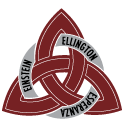Project-based Learning, Proficiency-based Assessment
Project-based Learning (PBL)
The basis of all instruction at Howard Street is project-based learning (PBL). This means that students must use knowledge and skills to accomplish a task or project, not just memorize facts for a test. PBL allows for students to personalize their learning by showing what they know. This requires application of knowledge and skills from many subject areas to create a product that is unique to the learner. We start with basic projects in sixth grade with certain perimeters to help students learn the basics of this process which includes many self-management skills that require practice before the more advanced work of eighth grade. PBL allows students to be creative and innovative while still learning.
Integration - Making Connections
At Howard Street, we want students to understand that the world is not separated into separate subjects or disciplines. Often this takes the form of alignment where grade level classes study similar subject matter in each separate class. Thus, sixth graders study Egyptian art style in 6th grade Art while studying about Ancient Egyptian culture in 6th grade Humanities and mummifying applies in 6th STEM.
In addition to alignment, students also experience a number of integrated projects. These are projects that are scored in multiple disciplines. 7th grade science infectious disease papers are scored in both Science Content and Humanities writing organization and conventions, as an example.
Lastly, sometimes we take time out of the traditional schedule to have integrated days. This has students working usually in pairs or groups to complete a larger task/project that uses many disciplines. Our EMBER ambassador project is an end-of-the-year integrated project pairing a sixth and seventh grader together.
Proficiency and EMBER : show what you know
At Howard Street we do not use letter grades to assess student work. Instead we assess proficiency against a standard - how well can a student perform independently. These assessments might be a project, a traditional test, a lab, a presentation or an in-class paper. The goal of proficiency is to give a student multiple chances to show what they know and the skills they have learned. Homework and classwork are practice to learn content or skills before the proficiency performance. Just like a sport or music, students need time to practice and learn without being pressed by grades or tests every step of the way. Then they will be ready to perform.
However, that doesn't mean that habits like turning in work or working in groups isn't important. They are important and we also measure these habits in a form we call EMBER (Excellence, Mindfulness, Be Creative, Empathy, and Responsible Risks). We regularly assess students on EMBER all along the learning process, and use it as our progress report and in our self-reflections.
Giving and Getting Feedback - Peer Critique
In order to improve we all need feedback, and Howard Street uses a specific format: warm, cool, questions. We practice and teach this protocol to students so that all projects and presentations can receive critique on how to get better. This feedback comes from both teachers and students and helps students with editing and improvement. This feedback is crucial to help students reach proficiency.
EMBER ambassadors - William Shakespeare and Steve Jobs
Displaying our work is important in Project-based Learning (Bush Barn Art 2016)


